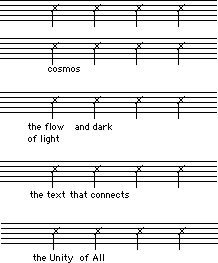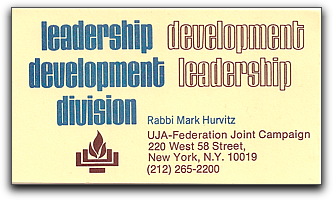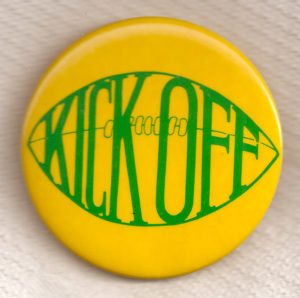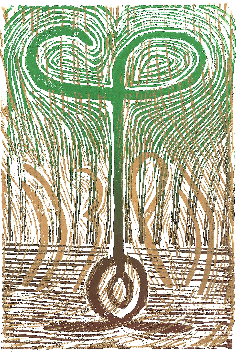When was the last time you…
- attended a concert?
- went to a sports event?
- played a musical instrument with a group of people?
- played a group sport?
- participated in a barn raising?
- helped build a house with Habitat For Humanity?
- participated in any collective endeavor?
Same with me.
An earlier version of this was first shared with my congregation Etz Chaim of Ramona (California), long before COVID-19 and our physical distancing, for Erev Yom Kippur of 5760 (September 20, 1999). Reposted now in recognition of a physically distanced Super Bowl.
But that’s our task together.
We’re not used to doing this. Putting out effort for something we have to share in common is very unusual for us.
Those of you who were with us on the morning of Rosh haShannah may recall that I led us through what we call the P’sukei d’Zimra. I even got us all singing “Hallelujah!” I think we who were here together even enjoyed it. We felt good about raising our voices in song.
When we ended those verses of song I mentioned that we had done our warm-up exercises and we were, I hoped, ready to get up for the serious effort ahead. I had hoped that we could maintain the participation level. However, for some unclear reason, that did not happen. I know, it doesn’t have to be that way. But so many of us are “out of practice”. How did we fall out of practice, and how can we change it?
jews invented the sports bar!
How many of us will watch the Super Bowl? How many hoped to get tickets to the World Series? Those of us who didn’t… have you ever gone to sports bar to watch an important game?
Did you know that we Jews invented the “sports bar”? Whenever you’re sitting in a synagogue, you’re in a precursor.
Over two thousand years ago, the Jews living all around the land of Israel lived a busy life. The main cultural/religious event happened in Jerusalem up in the mountains. The roads were less than two lane and most people usually had responsibilities at home so they did not go up to the Temple in Jerusalem as often as they might. In fact, the activities in the temple were divided up so that different communities would have a reserved place (on the 50 yard line, or near the third base line, so to speak) at designated times of the year. Even then not everyone in town was able to go. When it was their turn, the town’s representative would go up to Jerusalem to the Temple and the locals would gather at their local clubhouse. In fact they called it a meeting house “Beit Knesset”. There, in the town clubhouse the locals would wear the appropriate clothes, drink the appropriate drinks, eat the appropriate foods, and call out the appropriate cheers… as though they were there in Jerusalem with their buddies, the representatives.
I learned this lesson from my teacher Dr. Ellis Rivkin at HUC-JIR in Cincinnati, OH, especially his book A hidden revolution — The Pharisees’ Search for the Kingdom within. However, applying the metaphor of the sports bar is my own extension.
After a while a local Howard Cosell would develop. He’d offer a commentary on what everything was all about. We call this in Hebrew a “drash” and so, the clubhouse also came to be known as the “Beit haMidrash”.
So, here we are, two thousand years later. We sit (pre- and (hopefully) post-pandemic) in our clubhouse. However, many of us haven’t been practicing, or we haven’t used our season tickets. We don’t know how to recognize what a “first down” is and don’t understand what “offsides”, nor a “pop-up foul” or “grounder” means, and so when the cantor and rabbi lead the football cheer: “Push ’em back, push ’em back, way back!”, we’re not all able to participate with the right kind of intensity.
So, what are these cheers?
They’re designed to help us remember:
- who we are
- the rules of our existence
- why we’re here and
- what’s expected of us.
You know that after the warm-up exercises the cantor calls us all together to praise the Source of the cosmos. As soon as we’ve done that we focus on the cosmos itself, the flow of light and darkness. We then look inward a bit and call out the cheer that speaks of the connection between the cosmos, its creator and human beings. And all of this leads us to a renewed awareness of the unity of all creation so we say the Shema.
Maybe the logos on the pennants are a bit outdated. Maybe the rhythms of the cheers need a renewed beat. But hey, think if it:
Cosmos
The flow of light and dark
The text that connects
The unity of all
Can you imagine cheers more awesome? It feels good, reassuring, even, to repeat them:
Cosmos
The flow of light and dark
The text that connects
The unity of all
Cosmos
The flow of light and dark
The text that connects
The unity of all

Cosmos
The flow of light and dark
The text that connects
The unity of all
But it doesn’t stop there. We Jews believe that the Source of the cosmos plays a role in human history. I’ve refered to this before. We celebrate this in our holidays (not Rosh haShannah and Yom Kippur, but) Pesach especially. And so we have special songs we sing that cheer about how this Source of the cosmos interrupted the cycle of events and set a trajectory into history by enabling a group of slaves to go free. That’s what we’re doing when we sing:
Who is like you among all the team managers who people cheer for?
You enable redemption
Now this is getting personal. Not only do we cheer that redemption happens, but that was our redemption! The tension and excitement builds:
Cosmos
The flow of light and dark
The text that connects
The unity of all
You enable redemption
It’s at this point that our cheers get up close and personal. But, you get the point.
Join us at the clubhouse. To mix a variety of metaphors, together we can create a chorus that will raise the roof.
ready for the kickoff?
Very few Judaic buttons deal with sports. Of these, the vast majority are from various Maccabiah events. A few commercial buttons have images of Jewish sports figures. Others, more novelty items, were created by Sal Kluger of Simcha Sales who produced a great number of Judaic buttons and sold them (and other chatchkas) at “nycechatchkas”.
This Kick Off button was produced by the Leadership Development Division of UJA-Federation Joint Campaign (NYC) for the beginning of its annual fund-raising drive. While at the time I was on the staff (my first job after rabbinic school)…

…I had nothing to do with its production.

| Date: | 1979 |
| Size: | 5.5 |
| Pin Form: | clasp |
| Print Method: | celluloid |
| Text | KICK OFF |
your lapel buttons
Many people have lapel buttons. They may be attached to a favorite hat or jacket you no longer wear or poked into a cork-board on your wall. If you have any lying around that you do not feel emotionally attached to, please let me know. I preserve these for the Jewish people. At some point, they will all go to an appropriate museum. You can see all the buttons shared to date.
The image at the top is of The Fairfax Five performing at the intersection of Fairfax Ave. and Rosewood Ave. in Los Angeles on October 2, 1972. The group consisted of (from left to right: Mark Hurvitz, Eilene Waterstone, Jay (Jacob) Bender, Steven Puzarne, & Bill Lyfield [Eytan Ben Sheviya] (on drums, hidden)); photographer, unknown.


